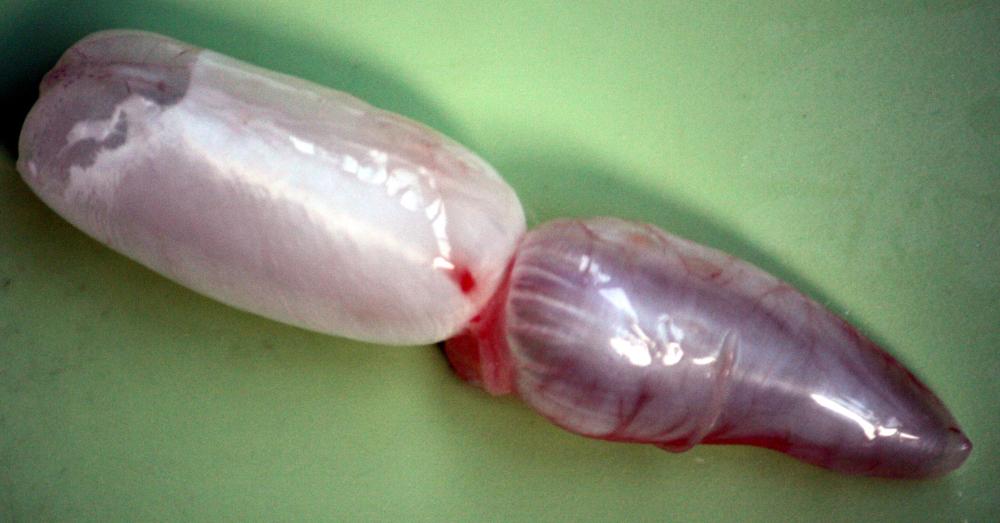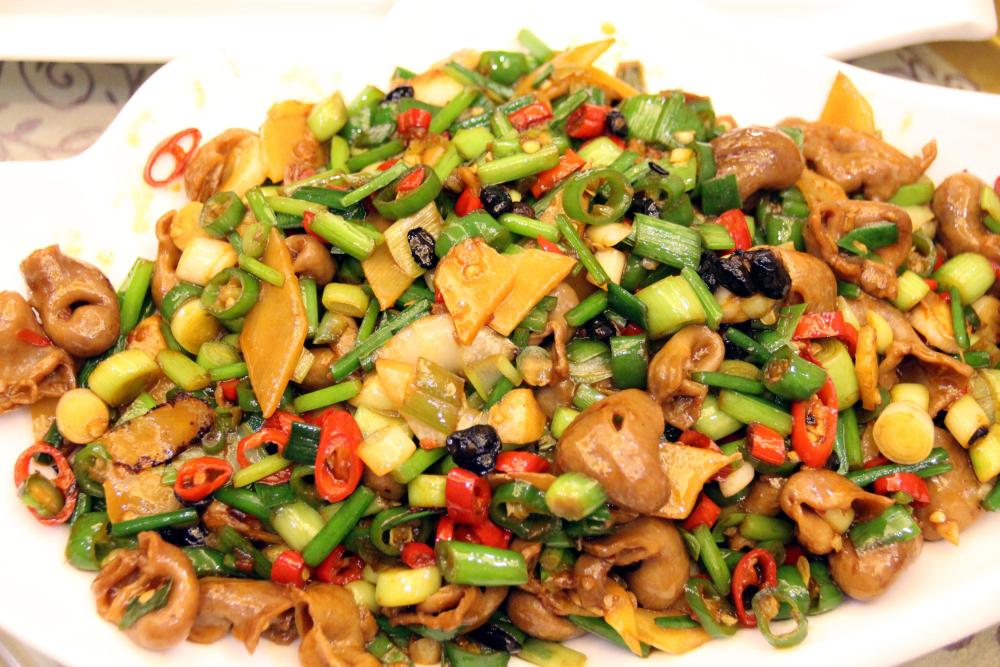Of course it’s not only mammals we eat. Reptiles, fish, amphibians, insects etc all feature in diets around the world. I’ve briefly mentioned fish livers in passing, but there are other parts that could be said to entail nose-to-tail. (I’m ignoring sharks’ fins, as should everyone given the way they are harvested.) The lips and “tongues” of some species (usually cod in the case of “tongues”). The lips are real but the tongues aren’t – they are actually a muscle at the back of the fish’s neck.
But what I want to mention today is a part of the fish which, although it literally has no taste, is highly prized in China and neighbouring countries for its textural qualities and ability to take on flavours from other ingredients. It is mostly just collagen.
The internet is littered with articles telling us that fish maw is the dried swim bladder. Wrong. It is simply the swim bladder, dried or not. I guess, the writers of those articles have only ever seen them dried, as that is how they are sold away from China. In Chinese they are 鱼鳔 (yú biào) or 花胶 (huā jiāo), although they are often misnamed as 鱼肚 (yú dǔ) which means ‘fish stomach’.
It certainly isn’t a stomach. For anyone who doesn’t know, the swim bladder is what enables bony fish to control their depth, allowing them to sink or float at will. Not all fish have them. Some have alternative flotation methods; others, most noticeably sharks, can only keep moving using muscle power. If they stop, they sink and die.
Fish Maw
Fish maws, originally sturgeon but today mostly cod, are used to make isinglass, used to clarify some beers and wines. They are also used to make glue.
The yellow croaker (黄鱼 (huáng yú), Larimichthys polyactis) is a desired food species but is being driven into the ‘endangered species’ category in waters off Brazil in the drive to keep Chinese diners demand for their maws satisfied.
QuoteYellow croaker meat sells for 20 reais ($3.55) per kg, he explains. But to his knowledge its maw costs 2,800 reais ($497) per kilogramme.
The maws are dried on board and flown to Hong Kong from where some enter mainland China; some legally, some otherwise.
QuoteMore than 10 years ago, there were maybe only a dozen or so people in the trade, Santos says. Now, he says, there are 400 or 500.
Quotes from this informative Al Jazerra article.
The high price of these maws has also led to the bladders being faked. Squid, shark's skin or fins are soaked in hydrogen peroxide and sulphur then heated and formed into ‘maws’. Real dried maw should be golden-yellow in colour and not the whitish, yellow tinged of the fakes. The real deal also has an obvious grain to it which is missing in the counterfeit variety and finally they should smell briny. Fake maws have either no scent or smell of the plastic they are sold in!
Cheaper maws, less desirable maws are widely available in China’s supermarkets. Like lumpfish roe compared to beluga caviar. My local stores and markets all have maws from freshwater fish mainly carp, especially big-head carp (大头鱼 (dà tóu yú), Hypophthalmichthys nobilis), grass carp (草鱼 (cǎo yú), Ctenopharyngodon idella) and crucian carp (黑鲫 (hēi jì), Carassius carassius).
So what do they taste like? Well, if you wrap it in a paper bag, that bag will have more flavour. As with many ingredients in Chinese cuisine, they are valued only for their texture. They are most often employed in soups where they pick up flavours from the other ingredients. Here is a non-soup dish of stir fried vegetables with fish maw and chillies which I ate in Hunan. Everything comes with chillies in Hunan!
Hunan Fish Maw Stir Fry




